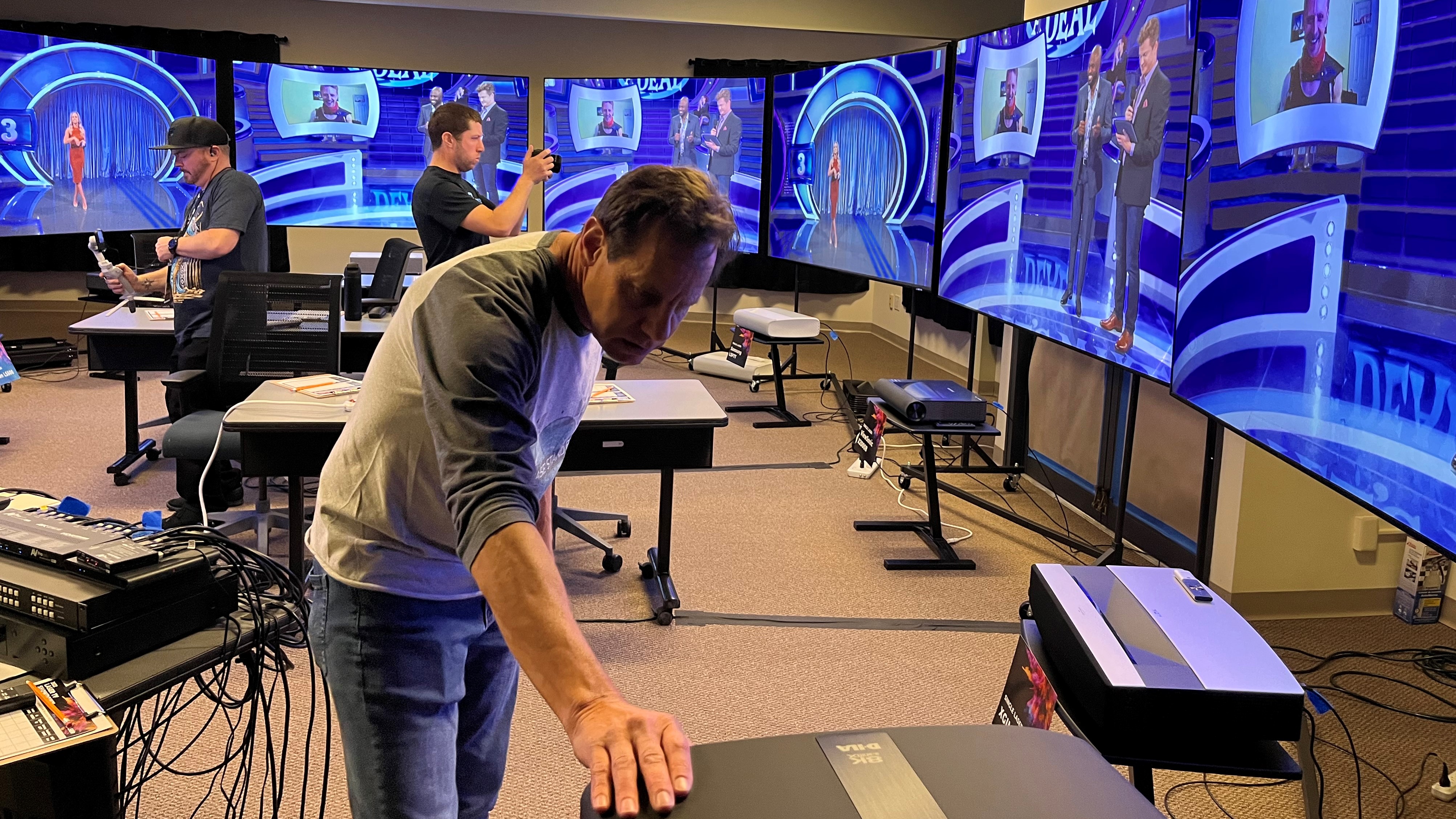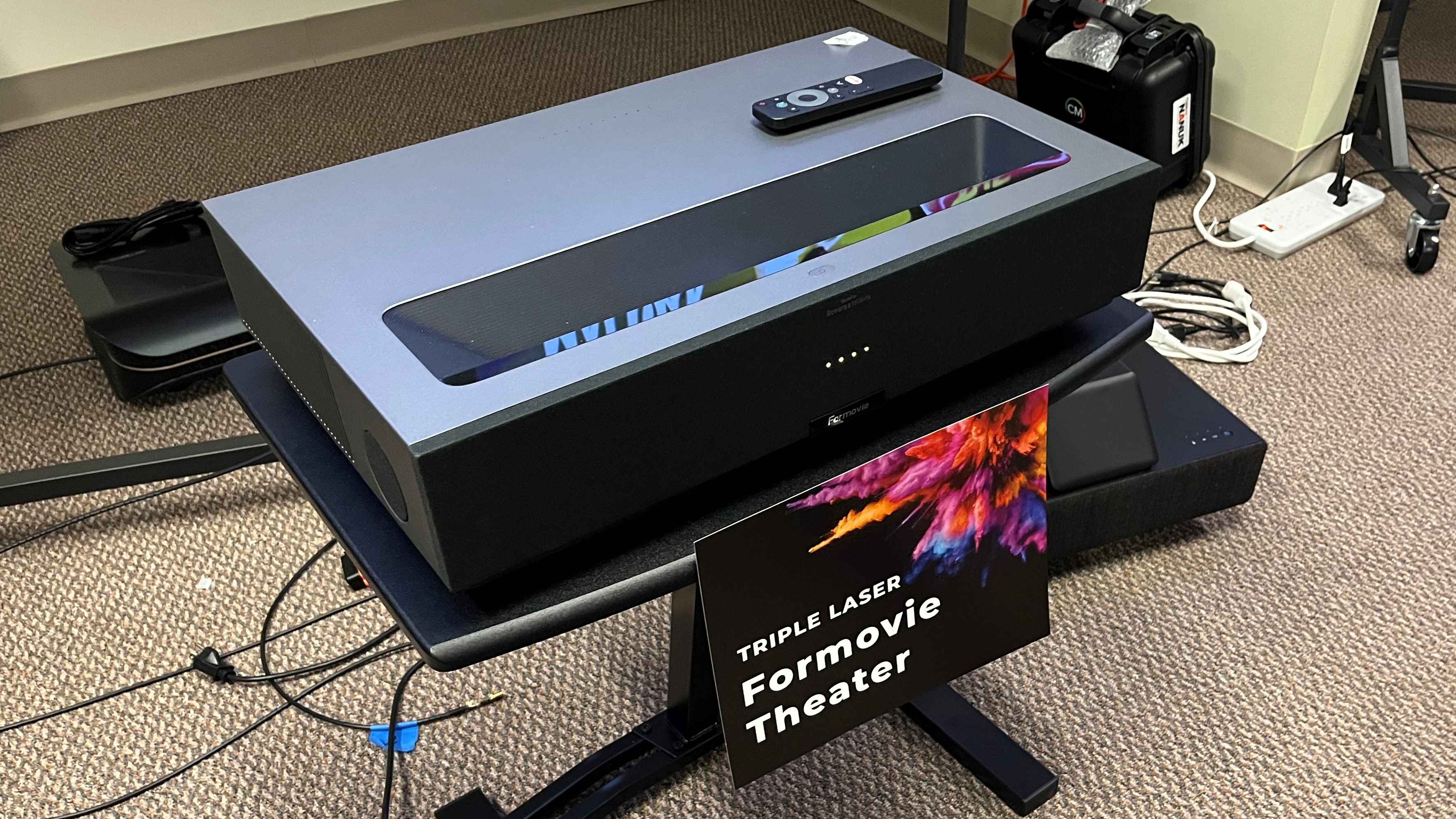I tested 14 projectors in a single day – these 2 were the best
All eyes on ultra short throw projectors

The ultra short throw (UST) 4K projector category is one that’s been growing rapidly over the past few years. How rapidly? We’re now at the point where it’s possible to gather 14 separate models with similar specs from different manufacturers and put them all together in a room to compare their performance.
If that last part sounds like something that can be easily done, I can assure you it’s not. Yet bringing in 14 models and installing them side by side for a Showdown is something projector testing and information website Projector Central undertook in order to make a thorough survey of the UST landscape.
The Showdown was hosted by A/V retailer ProjectorScreen.com at the company’s New Jersey facility and was split into two categories: single-laser and tri-laser projectors. These were installed so each had their own separate screen, with a Kaleidescape Strato 4K movie player and Oppo UDP-203 4K Ultra HD Blu-ray disc player serving as video sources and an 8 x 8 matrix switcher routing signals to the individual projectors, all of which were professionally calibrated prior to the Showdown.

As an invited judge for the event, I and my fellow judges – other A/V media and YouTube projector reviewers – were asked to evaluate the projectors under the following performance conditions: bright living room (HD), home theater (HD), and home theater (4K / HDR). Room lighting was optimized for each condition, and judges were asked to assess for the following criteria: color accuracy, detail, motion processing, contrast, shadow detail, and color gamut. For 4K / HDR performance, HDR tone mapping – an important feature for projectors – was added to the list.
Oh, and I forgot laser speckling: a visual artifact generated by the interaction between the projector and the ambient light rejecting screen – in this case, a formulation designed specifically to reflect light coming from the projector positioned below and to reject light coming from above – that shows up as a “grainy” overlay that’s mostly visible on bright colors like red. Laser speckling is a bad thing!
As a “control” JVC’s DLA-NZ8, a $16,000 4K laser projector that’s considered to be reference-quality by many video reviewers, was set up nearby and simultaneously fed the same signal so we could use it for comparisons with the other models.

Single-laser projectors - ranked
- BenQ V7050i (winner)
- Hisense 100L5G
- ViewSonic X2000B-4K
- Epson LS500
- XGIMI Aura
- LG HU715Q
- Samsung LSP7T
- Optoma P2
The first group tested was single-laser models. With this light engine design, a blue laser is used and that light is routed through an arrangement of filters and color wheels to create the blue, green, and red components of color images. Tri-laser projectors, in contrast, use dedicated lasers for red, green, and blue light, with a benefit being increased color space coverage – tri-laser models are typically rated to exceed the full BT.2020 color space specified for Ultra HDTV.
Sign up for breaking news, reviews, opinion, top tech deals, and more.
BenQ’s 7050i came out on top in our cumulative single-laser ratings. The BenQ edged out the competition with high marks for contrast, black depth, and shadow detail – all important factors when viewing movies in dark rooms. It was followed closely by the Hisense 100L5G ($3,776 at Amazon, including 100-inch screen) and ViewSonic X2000B-4K, the latter being a surprisingly tough contender with very good all-around performance, especially for its price.

Tri-laser projectors - ranked
- Formovie Theater (winner)
- LG HU915QB
- Hisense PX1-PRO
- Samsung LSP9T
- AWOL Vision LTV-3500
- VAVA Chroma
The Formovie Theater that took the tri-laser crown was unknown to most of the reviewers at the test, though some of us were aware of its Fengmi T1 Chinese counterpart, a model best known for being one of the first projectors to feature Dolby Vision processing.
The Formovie looked downright good with most images we screened on it, in some cases seriously outclassing its competitors. (I was impressed enough to hang around and do a hands-on test, which will soon post on TechRadar.) Accurate color, fine detail, solid blacks and shadows – all that could be appreciated on this projector. What’s even more notable is that the Formovie lists for $2,999, or $500 less than the third place Hisense PX1-PRO and half that of the LG and Samsung tri-laser models also featured in the Shootout.
Along with Dolby Vision support, the Formovie packs an integrated Bowers & Wilkins Dolby Atmos audio system – a feature I will cover in some detail in my forthcoming hands-on review.

Major lasers
Kudos to Projector Central and ProjectorScreen.com for a well-organized and executed shootout. I walked away from the event with a much more thorough grasp of the UST projector state of the art, and what viewers can expect from this burgeoning, living room-friendly projection technology.
While it was surprising to see how all over the map the projectors were in terms of performance, especially the pricier models, I can confidently recommend the top two in each of the categories. (Along with number three – the Viewsonic – in the single-laser test, which for me was a very close runner-up to the BenQ.) I think anyone looking to step up to a 100-inch “Laser TV” at an affordable price would be very happy with what they're getting here.
Associated gear used in test:
- Spectra Projection Vantage 100-inch UST ALR CLR screen (0.5 gain)
- Stewart Filmscreen StudioTek130 screen (1.0 gain)
- JVC DLA-NZ8 D-ILA projector
- Kaleidescape Strato 4K movie player
- Oppo UDP-203 Ultra HD disc player

Al Griffin has been writing about and reviewing A/V tech since the days LaserDiscs roamed the earth, and was previously the editor of Sound & Vision magazine.
When not reviewing the latest and greatest gear or watching movies at home, he can usually be found out and about on a bike.